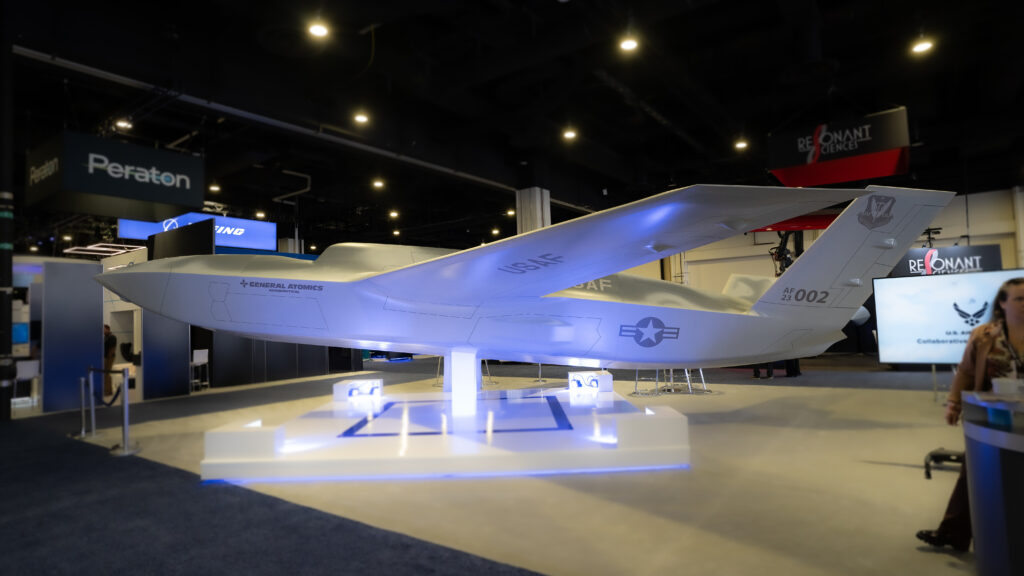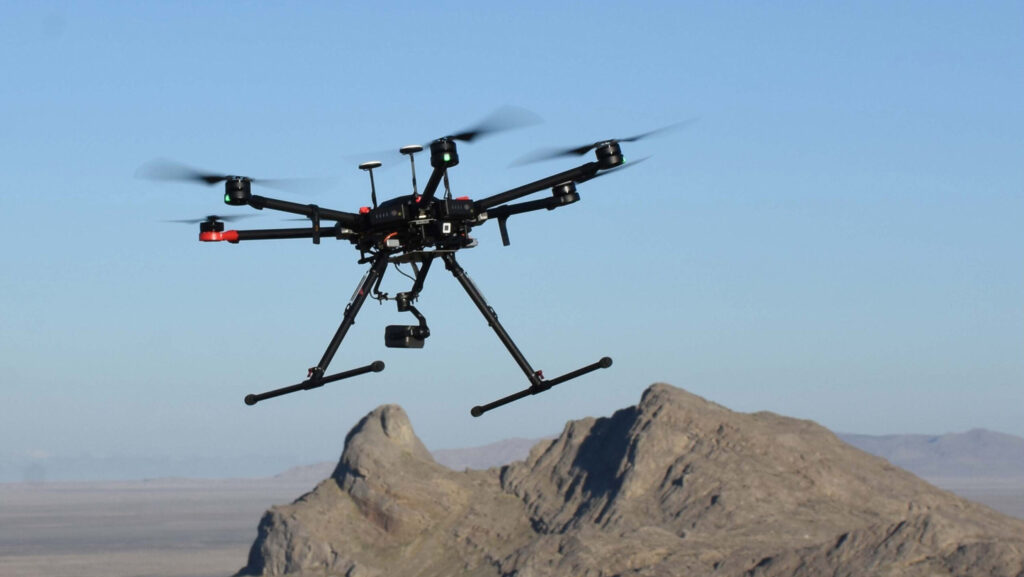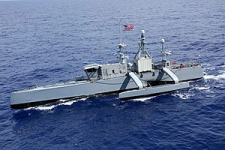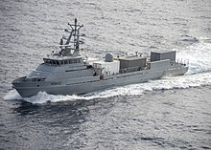Palmer Luckey’s Anduril is becoming a commercial threat to rivals who will fight it ‘tooth and nail’

www.telegraph.co.uk
Hanging on the wall in Palmer Luckey’s California office is a full-sized replica sword from the Lord of the Rings film trilogy.
The weapon – known as “Anduril” – inspired the name of the
billionaire’s insurgent defence technology company. Translated from the fictional language Elvish, it means “Flame of the West”.
In JRR Tolkien’s stories, the sword is reforged from a broken blade and wielded by Aragorn, a warrior-exile who returns to become king and leads an army against the forces of evil.
Now Luckey – an avid fan of fantasy, science fiction, Japanese anime cartoons and video games – has set an equally grandiose goal for the real-life Anduril Industries.
Advertisement
“Anduril will save Western civilization”, his pitch to investors reads, “by saving taxpayers hundreds of billions of dollars a year, as we make tens of billions of dollars a year”.
In practice, this means ramping up production of advanced drones and missiles, powered by artificial intelligence (AI), in numbers large enough to face down China and Russia.
According to Luckey – in an age of $1.6 trillion (£1.2 trillion) fighter jet programmes – the US and its allies must relearn what they seem to have forgotten: how to build effective weapons quickly, at large scale, for affordable prices.
And amid rising geopolitical tensions, ranging from Russia’s invasion of Ukraine to the
current conflict in the Middle East between Israel and Hamas, western governments are listening.
Since Luckey founded Anduril in 2017, the Los Angeles-based company has secured business from the Pentagon, Australia and the UK’s Ministry of Defence, among other customers, with its drones deployed by Ukraine against Vladimir Putin’s forces.
Advertisement
Advertisement : 29 sec
This year, the company has also won major contracts with the US Air Force, Army and Space Force – humiliating bigger rivals that have been in the game for decades.
Luckey – who sports a mullet haircut, goatee and an outfit consisting of Haiwaian shirts, cargo shorts and sandals – is known for a combative and swaggering style that attracts comparisons with Elon Musk, the founder of electric carmaker Tesla and rocket company SpaceX.
Palmer Luckey wants to emulate the way Elon Musk’s SpaceX won Nasa contracts on price Bloomberg/itKyle Grillot
Both men are well regarded for their engineering smarts but also viewed as dissidents in liberal-leaning Silicon Valley, with both expressing vocal support for Donald Trump.
Like Musk, Luckey is also challenging the business model of the most powerful defence industry incumbents – large companies known as “primes” – which he claims is failing to meet the moment as Western governments race to replenish their munition stockpiles.
While US and European officials have increasingly focused on developing relatively small numbers of increasingly sophisticated, “exquisite” stealth aircraft, tanks and armoured cars, they have struggled to produce enough artillery shells to send to Ukraine and to replenish missile stocks after donating them to Kiev.
At the same time, war games have found key American weapons such as anti-ship missiles would be expended within the first week of a US-China conflict. But they would take years to replace, owing to slow and highly specialist production lines.
Last month, Anduril unveiled a potential solution: a family of ultra-cheap cruise missiles, called Barracuda, capable of being made at “hyperscale” with common tools and commercially available components.
Along with robot submarines and fighter jets, virtual reality goggles and a plethora of jamming and detection devices – all linked together by AI software – the missiles are part of the new “arsenal of democracy” Luckey hopes to build en masse in a series of high-tech, reconfigurable factories.
“I don’t think the United States needs to be the world police,” the billionaire said in a recent television interview with Bloomberg. “I think we need to be the world’s gun store.
“We need to be able to provide our allies and our partners with the tools they need to turn themselves into prickly porcupines that no one wants to step on.”
Anduril’s missiles are being touted as a potential $150,000-per-shot alternative to munitions produced by Lockheed Martin and Boeing, which currently cost between $700,000 and $3m each. The company claims they require 50pc of the parts and 95pc fewer tools to make.
The weapon is an example of Anduril’s “off the shelf approach”, where it invests in research and development itself and then sells ready-made products to governments.
By contrast, most defence primes invest single digit percentages of their revenues in R&D and instead operate on “cost-plus” contracts with customers, where they are paid for the development process.
Luckey has said his goal is to
emulate Musk’s SpaceX, which muscled its way into contracts with US space agency NASA by offering dramatically cheaper rocket launches than bigger, traditional rivals.
“Anduril’s approach does mean sacrificing some of the capabilities in these other, exquisite systems, and of course you are not going to be able to build F-35 jets or aircraft carriers in commercial factories,” says Stacie Pettyjohn, a senior fellow and director of defence at the Centre for a New American Security.
“But that’s because cost is really the factor they have zeroed in on.”
She says weapons like Anduril’s “wingman” autonomous fighter jet and Barracuda missiles are likely to compliment rather than completely replace more expensive platforms, but adds: “They’re ultimately proposing a new kind of defence market… and that’s inevitably going to pose a challenge to existing programmes and budgets.”
Earlier this year, Anduril embarrassed some of its bigger rivals when its “Fury” drone beat alternatives made by Lockheed, Boeing and Northrop Grumman in a competition to design an autonomous fighter jet for the US Air Force.
In September, tensions boiled over as General Atomics, which made the final two with Anduril in the contest, appeared to compare Luckey to Elizabeth Holmes, who was
jailed in 2022 for making fraudulent claims about her blood test company Theranos.
Mark Brinkley, a spokesman for General Atomics, told the Breaking Defence website: “Sometimes you find these companies, and they say they’re going to use one drop of blood and they’re going to revolutionise the whole world, and then they grow up to be Theranos.
“Quite frankly, when you look at the Fury – to me, it looks like trying to use a drop of blood to change the world. And I don’t see it.”
Luckey did not respond directly to the comments, but instead posted on Musk’s social network X, formerly known as Twitter, to joke that General Atomics “doth protest too much”.
In another post he referred to the jailing of Theranos boss Holmes, writing: “I guess I am going to prison for 11 years” with a sad text emoji.
It was a typical riposte from the mercurial billionaire, whose backstory is quintessential Silicon Valley.
He owns an oceanfront mansion in Long Beach, along with six helicopters, a collection of fast cars he keeps in a giant subterranean garage, a former US Navy gunboat and even several decommissioned US nuclear missile silos – at least one of which he wants to convert into a museum.
Alongside Anduril, his other current venture is a video game business that has just produced a recreation of Nintendo’s best selling – but out of production – Gameboy Colour console.
He earned his reputation as a tech prodigy early on.
As a teenager, Luckey built a groundbreaking virtual reality headset out of scraps, while living in a campervan on his parents’ driveway.
The idea went on to become the Oculus Rift headset – now seen as a paradigm-shifting jump in technology – which he sold to Facebook for $2bn, netting him a fortune of hundreds of millions of dollars at the age of 21.
Palmer Luckey sold Oculus VR to Facebook for $2bn in 2014 Ramin Talaie/Corbis via Getty Images
The merger ended on a sour note just two years later, however, when Luckey was fired over his $10,000 donation to a pro-Trump campaign group dedicated to “s***posting” Hilary Clinton.
By Luckey’s own telling, the furore led to his effective exile from Silicon Valley, despite a lack of proof for claims that he had funded hate speech.
That is when the billionaire – after ruling out other projects – decided to start Anduril.
The venture secured backing from
Peter Thiel, who also funds rival defence startup Palantir (another Lord of the Rings reference), as well as other big names such as 9Yards, the investment vehicle run by former British chancellor George Osborne and his brother Theo Osborne, and Baillie Gifford.
For now, Luckey says he expects Anduril to keep making losses while it invests to win business. A stock market listing has been hinted at but not as a priority.
However the company was recently valued at $14bn and it is expected to generate revenues of more than $1bn by 2026.
“What I think is quite interesting is that Luckey’s a complete outsider in defence,” says Theo Osborne, of 9Yards.
“But sometimes it takes an outsider to come into an industry and shake it up, because they think about things on a first principles basis as an engineer.
“I think he’s really a once in a generation founder, definitely the type of person you want to back.”
Luckey’s willingness to work with the military – something Google employees famously refused to do – has also attracted criticism from some quarters in Silicon Valley.
Anduril’s ultra-cheap cruise missiles, called Barracuda, are capable of being made at ‘hyperscale’ with common tools and commercially-available components
When he worked at Facebook and drove a desert Humvee military truck to the office, colleagues accused him of flaunting a symbol of “American oppression” and even called the police once.
But the billionaire himself is unrepentant about his mission, arguing that those who oppose a strong Western military posture are playing into the hands of China and Russia by holding such “luxury beliefs”.
“Societies have always needed a warrior class that is enthused and excited about enacting violence on others in pursuit of good aims,” he told TechCrunch in a recent interview.
“You need people like me who are sick in that way and who don’t lose any sleep making tools of violence in order to preserve freedom.”
After big wins in the US and Australia, where Anduril is building “Ghost Shark” robot submarines for the navy, Luckey is now also seeking to do more business in Britain.
His company already works with the Royal Marines and has sold sentry equipment to the Home Office to monitor the English Channel.
But Anduril is also thought to be targeting
a contract with the British Army to provide battlefield software and is also keen to find more buyers for his Barracuda missiles and other products such as the Fury drone.
Now his company is growing into a commercial threat, however, it is not just peace protesters who will be painting a target on Luckey’s back.
Rival defence primes, who wield massive influence in Washington and London, are unlikely to go quietly, says Francis Tusa, an independent defence analyst.
He also questions whether Anduril will be able to make gains in countries outside the US while strict defence export restrictions remain in place.
“What Anduril is proposing is a massive departure from the norm, it will be fought tooth and nail by the defence primes,” Tusa adds.
But if Luckey succeeds like his hero Aragorn, he’ll have written his own story for the ages.






www.telegraph.co.uk






breakingdefense.com






